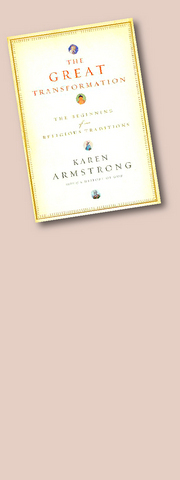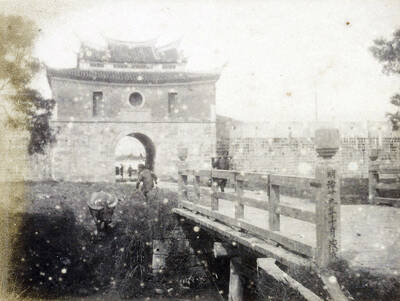For most of recorded history, human beings have been embroiled in violent conflict, either as victims or aggressors. Life, filled with pain and suffering, has been shaped by unpredictable forces beyond mortal ken. In The Great Transformation, Karen Armstrong, the historian of religion, offers a sweeping account of the centuries-long struggle by spiritual seekers to address these problems and transcend them in China, India, Israel and Greece.
The Great Transformation looks far into the past. It begins with the first stirrings of religious consciousness, about 3,500 years ago among the Aryans of the southern Russian steppes, that would eventually lead humanity from nature worship and sacrifice to an inward-looking, self-critical and compassionate approach to life.
This transformation occurred independently in four different regions during the Axial Age, a pivotal period lasting from 900BC to 200BC, producing Taoism and Confucianism in China, Buddhism and Hinduism in India, Judaism in the Middle East and philosophic rationalism in Greece.

Moving back and forth from one culture to another, Armstrong, the author of A History of God and histories of Buddhism and Islam, provides a lucid, highly readable account of complex developments occurring over many centuries. For the general reader The Great Transformation is an ideal starting point for understanding how the crowded heaven of warring gods, worshiped in violent rites, lost its grip on the human imagination, which increasingly looked inward rather than upward for enligh-tenment and transcendence.
In historical time the great transformation is remote. But Armstrong argues passionately for its relevance to a world still embroiled in military conflict and sectarian hatreds. This is the powerful undertow to her book. "In times of spiritual and social crisis, men and women have constantly turned back to this period for guidance," she writes. "They may have interpreted the Axial discoveries differently, but they have never succeeded in going beyond them."
Even further, Armstrong argues that the radicalism of the great Axial thinkers has yet to be understood. Their notion of the religious life was concerned less with belief systems than with self-transformation. Most were uninterested in questions of theology. "Their objective was to create an entirely different kind of human being," she writes.
Spiritual change took place in specific historical, social and economic contexts, which Armstrong sketches out as she moves her narrative along. Centuries fly by, often in a blur, and the need to press ahead can lead to extreme foreshortening.
"The Sophists taught systematic doubt at a time of deepening
anxiety," Armstrong writes. Virtually every period she discusses could be called an anxious age. That old friend, "age of transition," inevitably shows up, and, in a discussion of karma, the author uncorks a doozy: "As this new
concept took hold, the mood of India ... became depressed."
With only a few slips, however, Armstrong keeps her four plates spinning at top speed, moving easily from one to another. She is partic-ularly nimble in working her way through the Bible, tying each book to the historical circumstances of its composition and the preoccupations of its many editors. Yahweh, for example, gradually changes from an angry warrior god, quite similar to his counterparts in the Vedic pantheon, and an equal with rival gods of the Middle East, into the creative force that brought the world into being without violence, in sharp contrast to the gods of Greece.
The gradual elimination of violence from religion is one of Armstrong's great themes. In India priests in the 9th century BC had revised the sacrificial rituals to purge them of any practices likely to lead to violence, paving the way toward the guiding Axial concept of harmlessness. In China, the concept of the ideal ruler changed from a warrior wielding magical powers to a serene, wise ruler whose daode (道德) or royal potency, "brought spiritual benefit to the people."
Armstrong tells a hopeful story. The Axial sages move humankind from a religious worldview mired in tribal loyalty and self-interest to an expansive spirituality that takes account of others. In writing of the Jains, circa 530BC to 450BC, she writes, "The new ideal was no longer merely to refrain from violence, but to cultivate a tenderness and sympathy that had no bounds."
Greece is the great exception. At a time when the Hebrew prophets were preaching monotheism, Greece opted for polytheism. In religion the Greeks were, in a sense, committed reactionaries. Their achievements lay in the fields of philosophy, ethics and science, and it was they who would lay the groundwork for what Armstrong calls the second great transformation, the scientific revolution of the 16th century that created the modern industrial world but that represents "a more mundane illumination." Armstrong gives them, and the West, a somewhat grudging two cheers.
"The Axial Age was a time of spiritual genius; we live in an age of scientific and technological genius, and our spiritual education is often undeveloped," she writes.
The Great Transformation concludes vaporously. Armstrong, noting that "we are living in a period of great fear and pain," makes a high-minded plea for the warriors and aggressors of the world to heed the teachings of the Axial Age, and for nations to adopt a more self-critical spirit in their dealings with one another. It is time, she argues, for the modern world to look backward and adopt the Axial ideals of "sympathy, respect and universal concern."
Well, all right, fine. But these sentiments, however lofty, seem squishy. The conclusion does a disservice to a splendid book. After an inspirational journey through more than two millennia of profound thought, struggle and enlightenment, the reader gets a fortune cookie at the end.

June 9 to June 15 A photo of two men riding trendy high-wheel Penny-Farthing bicycles past a Qing Dynasty gate aptly captures the essence of Taipei in 1897 — a newly colonized city on the cusp of great change. The Japanese began making significant modifications to the cityscape in 1899, tearing down Qing-era structures, widening boulevards and installing Western-style infrastructure and buildings. The photographer, Minosuke Imamura, only spent a year in Taiwan as a cartographer for the governor-general’s office, but he left behind a treasure trove of 130 images showing life at the onset of Japanese rule, spanning July 1897 to

In an interview posted online by United Daily News (UDN) on May 26, current Chinese Nationalist Party (KMT) Chairman Eric Chu (朱立倫) was asked about Taichung Mayor Lu Shiow-yen (盧秀燕) replacing him as party chair. Though not yet officially running, by the customs of Taiwan politics, Lu has been signalling she is both running for party chair and to be the party’s 2028 presidential candidate. She told an international media outlet that she was considering a run. She also gave a speech in Keelung on national priorities and foreign affairs. For details, see the May 23 edition of this column,

The Taiwan People’s Party (TPP) on May 18 held a rally in Taichung to mark the anniversary of President William Lai’s (賴清德) inauguration on May 20. The title of the rally could be loosely translated to “May 18 recall fraudulent goods” (518退貨ㄌㄨㄚˋ!). Unlike in English, where the terms are the same, “recall” (退貨) in this context refers to product recalls due to damaged, defective or fraudulent merchandise, not the political recalls (罷免) currently dominating the headlines. I attended the rally to determine if the impression was correct that the TPP under party Chairman Huang Kuo-Chang (黃國昌) had little of a

At Computex 2025, Nvidia CEO Jensen Huang (黃仁勳) urged the government to subsidize AI. “All schools in Taiwan must integrate AI into their curricula,” he declared. A few months earlier, he said, “If I were a student today, I’d immediately start using tools like ChatGPT, Gemini Pro and Grok to learn, write and accelerate my thinking.” Huang sees the AI-bullet train leaving the station. And as one of its drivers, he’s worried about youth not getting on board — bad for their careers, and bad for his workforce. As a semiconductor supply-chain powerhouse and AI hub wannabe, Taiwan is seeing